In this tutorial, we will show you how to use the task manager on the Ubuntu operating system.
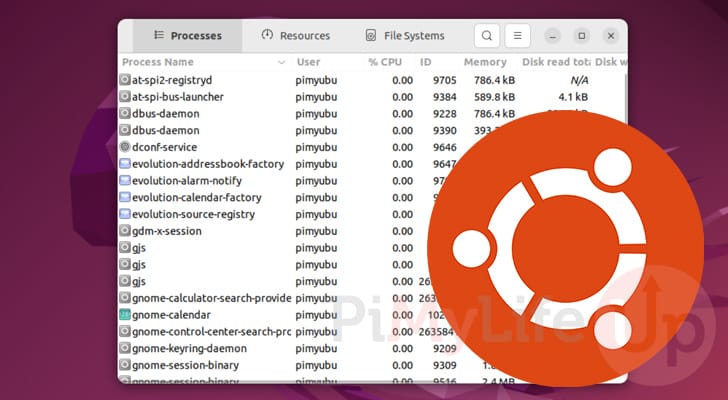
While Ubuntu doesn’t have a program called task manager it does have a program that performs the same functionality as its Windows counterpart.
On the desktop side of Ubuntu, you have a program called “System Monitor”. This program allows you to track the resource usage of any process running on your device. It is super helpful when you want to find out what is consuming resources on your system.
When it comes to the terminal side of Ubuntu, you have a few great solutions that work well for monitoring your system. We will focus on two in particular: top and htop.
In the following sections, we will show you how to use the task manager on both the desktop and terminal variants of Ubuntu.
The advantage of using the desktop variant is that it simplifies using the task manager. You don’t have to worry about remembering various keyboard shortcuts.
However, if you are stuck with the terminal, you will find the available tools are just as powerful, if not more powerful than the default desktop task manager featured on Ubuntu.
Using the Task Manager on Ubuntu Desktop
In this section, we will show you how to open the task manager on Ubuntu and a quick overview of how to utilize this tool.
The desktop variant of the task manager goes by the name “System Monitor”. This tool is relatively easy to use and provides access to most of the information you will need to monitor programs on your system.
Opening the Task Manager on Ubuntu
In this section, we will be showing you a few different ways that you can open the system monitor on your system.
Opening the System Monitor Task Manager from Ubuntu Desktop
a. One of the easiest ways to open the task manager on Ubuntu is to utilize the activities screen.
To open this screen you will want to click the “Activities” option in the top-right of the screen.

b. Use the search bar on this screen to look for “system monitor” (1.). This is the tool that is equivalent to the task manager on Ubuntu.
You can open this tool by clicking the “System Monitor” option (2.).
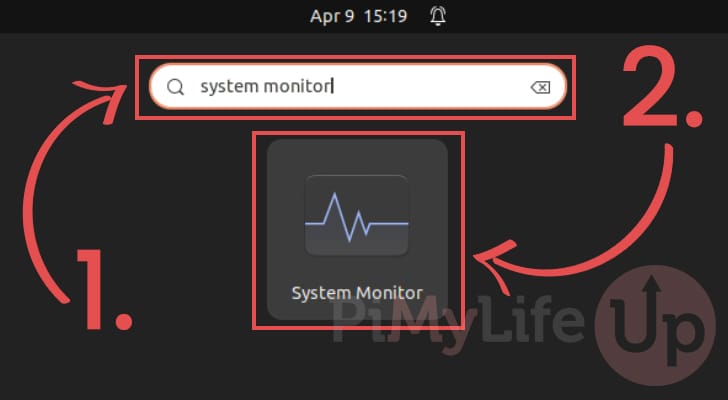
Using the Terminal to Quickly Open System Monitor on Ubuntu
If you are happy with using the terminal, then you will find it to be one of the easiest ways to open the system monitor on your Ubuntu system.
a. First, you must open the terminal on your Ubuntu device. You can open the terminal easily by pressing CTRL + ALT + T on your keyboard.
The terminal can also be opened by using the activities screen, but the keyboard shortcut is the fastest and simplest method.
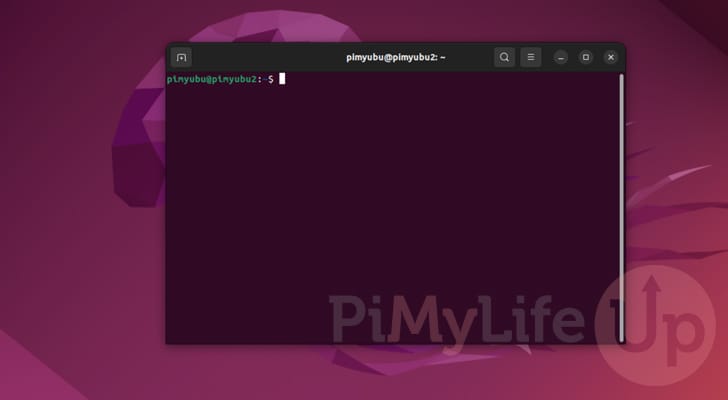
b. Within this terminal, all you need to do to open the System Monitor tool on Ubuntu is to type in the following command.
gnome-system-monitorCopyUsing the Ubuntu Task Manager
Now that you have the system monitor open on Ubuntu let us give you a quick overview of this tool. You will find that it is really simple to use.
1. With the system monitor open on your Ubuntu device, it is very similar to the Task Manager on Windows devices.
Here, you can see a list of processes running on your system, the user the process is running under, and its resource usage.
You can easily use this menu to see what programs are consuming resources on your system.
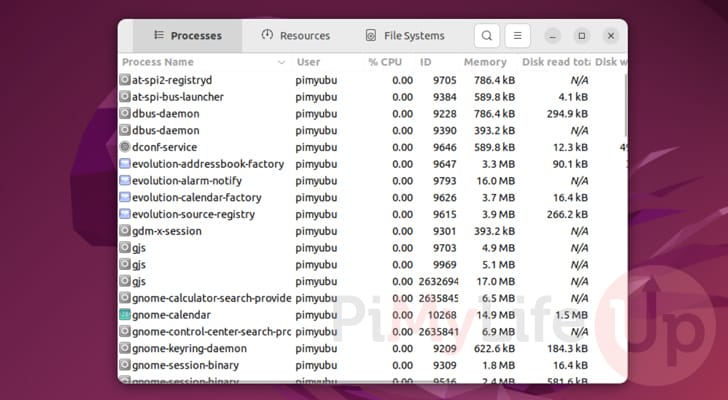
2. Right-clicking any of the processes within this menu will give you a few different options.
You can use this to stop, end, or kill a process. Through this menu, you can also set things such as the process priority and affinity.
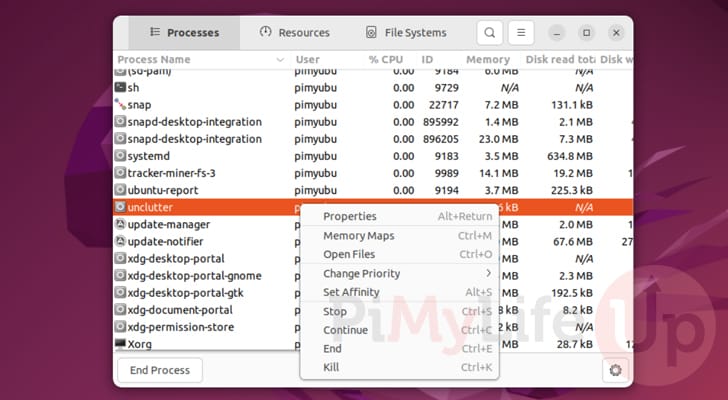
3. The system monitor on Ubuntu also allows you to get an overview of your system’s resource usage.
To see your CPU, RAM, and network usage, click on the “Resources” tab.
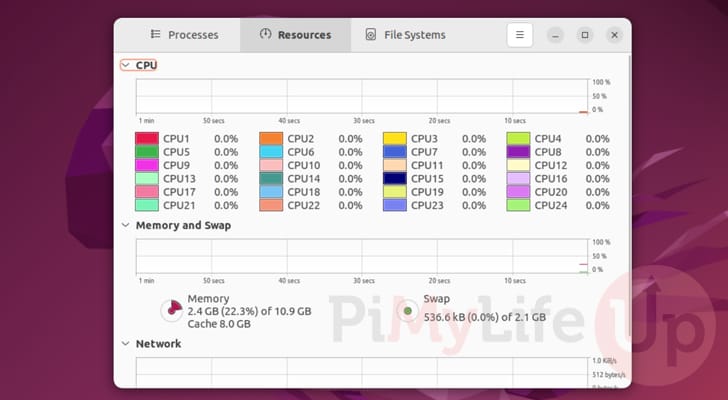
4. By switching to the “File Systems” tab you can view the status of each of your storage drive’s partitions.
Use this screen to see how much storage is available on each of your partitions and how much has been consumed.
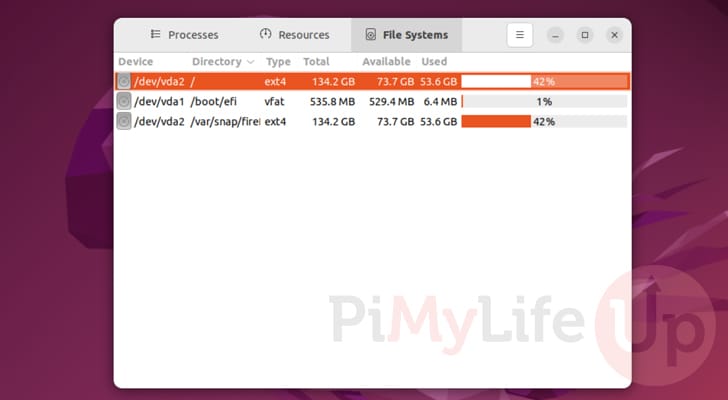
Using the Task Manger from Within the Terminal on Ubuntu
In this section, we will show you two programs that you can use within the terminal on Ubuntu as a rough equivalent to the task manager.
The first command-line tool we will explore on Ubuntu is top. This tool comes with all variants of Ubuntu, so it is a great one to learn how to use.
The other tool we will check out is “htop.” This program is similar to top but provides a full list of running processes instead of just the top resource-consuming processes. It also has some changes to its interface that make it easier to view information.
Using top as a System Monitor on Ubuntu
As mentioned earlier, the top command is one of the best terminal-based solutions for being a task manager on Ubuntu.
This tool is simple but allows you to easily see your machine’s top resource-consuming processes. Best of all, it comes pre-installed on almost all Ubuntu systems, so you don’t have to worry about trying to install another piece of software.
1. With the terminal open on your Ubuntu device, all you need to do to load up the top system monitor is to use the following command.
The most basic usage of this command will show you the top resource-consuming processes on your system. We won’t be diving too deep into how this tool works but will give you a quick overview.
topCopy2. With top running on your machine, you will be greeted by something similar to what we have shown below.
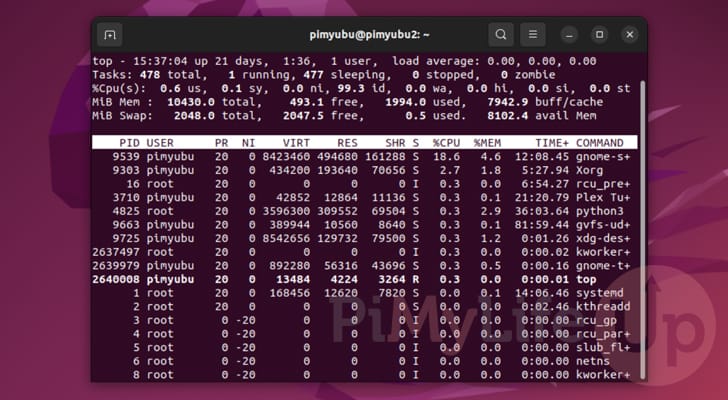
3. While this tool can look intimidating, it is very simple to use. Let us quickly explore some of the keyboard shortcuts that will make this tool easier to use and allow you to manage running tasks easier
- K – This key allows you to kill processes currently running on your system.
After pressing “K“, all you need to do is type in the ID of the process you want to stop running. This ID is located in the left-hand column. - SHIFT + P – Using this keyboard combination allows you to sort the list by processes consuming the most CPU.
- SHIFT + M – Change the list so that it is sorted by the amount of memory the process is consuming on your system.
Using htop
If you find that the top tool doesn’t provide enough functionality to act as a task manager on Ubuntu, there is always htop.
htop was built as an alternative to top on Linux systems. It has some increased functionality and is also significantly more configurable. It is a great solution if you find you need to monitor your processes more often.
The downside of htop is that it is not included with Ubuntu by default.
1. Before installing any software on Ubuntu, you should update the package list cache.
If you don’t update this cache, there is a chance the package manager attempts to download from a mirror that doesn’t exist.
sudo apt updateCopy2. Once your package list cache is updated, you can install the htop system monitor to Ubuntu by running the following command within the terminal.
sudo apt install htopCopy3. After installing this tool, you can launch it at any time by simply typing “htop” into the command line as shown below.
htopCopy4. You can now use the htop tool as a terminal-based task manager on Ubuntu. This tool works a bit differently to top, so it might take a little bit of getting used to it.
Instead of using keyboard shortcuts you will find it relies heavily on the function, arrow and enter keys. For example, you can use the arrow keys to navigate the menu, and press F9 to kill the selected process.
In addition to the navigation changes, you will also immediately notice that how it presents the information is drastically different. Instead of the monochrome design of top, it chooses to use colors to make things clearly defined.
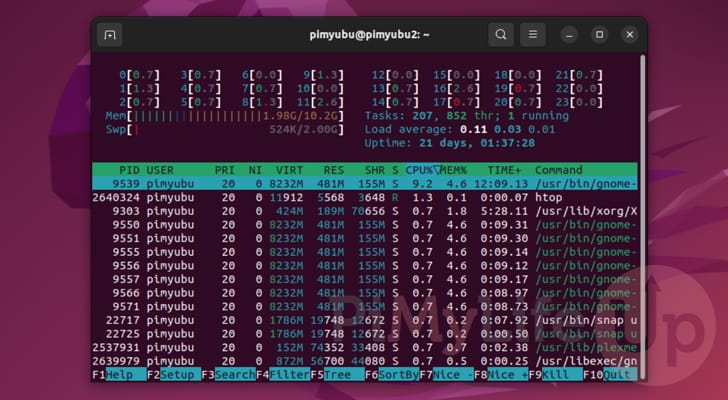
Conclusion
Hopefully, at this stage of the guide, you will have a good idea of how to use a task manager equivalent on Ubuntu.
On desktop variants of Ubuntu, your go-to task manager will be the tool called “System Monitor.” However, when it comes to the terminal, you have a wide variety of easy-to-use options, such as the “top” and “htop” tools.
Please feel free to leave a comment below if you have any questions about monitoring processes on your system.
If you found this guide helpful, we highly recommend checking out our many other Ubuntu guides.
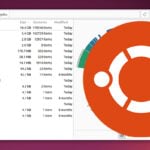
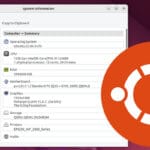
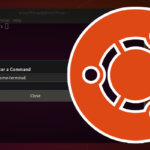

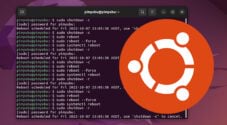
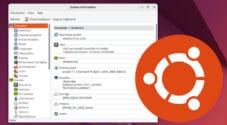
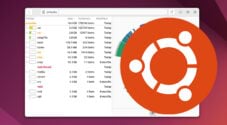
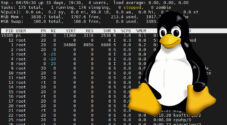

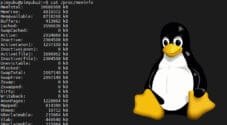
Hi Emmet,
Thank you for this tutorial, HTOP makes it easier to monitor things!
But I did notice a typo in section ‘Using htop’, step 2 says :’sudo apt install hop’. but this should be ‘sudo apt install htop’. (Atleast I think)
Have a nice day 😀
Hey,
Really glad that you liked this tutorial!
Thank you very much for pointing out that typo to me, I have now corrected that within the tutorial so it not installs the correct package.
Kind regards,
Emmet